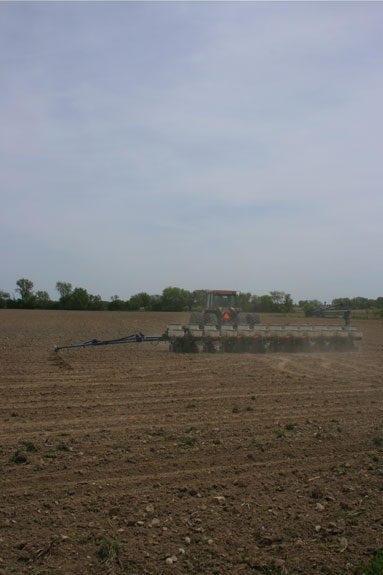
Every spring growers plant corn hybrids to cut for silage. Some years the quality is high, some years not so high. Here’s a look at the factors that influence silage quality.The first step is hybrid selection. Genetic selection is a critical quality decision. Start the season by selecting a “short list” of hybrids to help reduce the genetic variability of silage quality.
Select a small group of hybrids with varying maturities. This ensures maturity and genetic diversity, while allowing growers to select key technologies, agronomic traits and disease strengths.Don’t delay planting
The next key is planting. Planting date and emergence uniformity influence silage quality as well as yield. The highest potential silage quality comes from planting as early as practical to establish a uniform plant stand.
The planting date for silage should be the same as for grain corn. For high yield, good quality and maximum milk per ton, plant early – within a week of grain corn.
Ensure planters are tuned and set to field conditions. This will help ensure uniform seed distribution and plant establishment. Starter fertilizers can help plant development during challenging environmental conditions.
Consistent plant spacing within the row helps ensure uniformity and maximize silage quality. Uneven emergence produces variability among plants, hence variability in silage quality.
Plants may develop differing heights, differing levels of grain set and, consequently, a range in silage dry matter at harvest. All these can have detrimental effects on silage quality traits.
Mother Nature weighs in
Of course, weather is the wild card. Planting hybrids of different maturities can help offset the potential effects of weather.
A longer-season hybrid generally will develop more plant mass than a shorter-season hybrid. It may have 21 to 23 leaves, compared to 14 to 17 leaves.
Timing key to drought stress
If drought is persistent, it will threaten hybrids of all maturities. Moisture stress can change the development of a plant, depending on its timing and severity.
Moisture stress at flowering can have a dramatic effect on yield, plant size, grain set and the grain-to-stover ratio. Drought during the later stages of grain fill has less influence on starch content and, thus, silage quality.
Insects can have a detrimental effect on plant health and starch deposition, too. For maximum silage quality, use corn borer protection in areas where corn borer would be used for grain production.
Like other biotic factors that limit the production of yield, molds and mycotoxins can have a deleterious effect on silage quality. Plant pathogens that influence plant development, starch production and late-season plant health can reduce silage quality.
Harvest timing is vital
Harvest timing can have a dramatic effect on silage quality. Harvesting too early may lower starch deposition, changing the grain-to-stover ration. Harvesting too late can result in high levels of lignin, which may reduce feed intake.
We conduct harvest-timing studies to define quality changes throughout the harvest window. We find dry matter content can increase by 3 to 5 percentage points per week. Take this into account during harvest.
It’s good to know the planting date, maturation date and tasseling date of hybrids grown for silage. If you know the tasseling date – or better yet, the silking date – you can add 42 to 47 days to get a good harvest target date.
It also is suggested to evaluate drydown constantly to pinpoint harvest data. You may not be able to name your date with customer choppers, but you can prioritize fields based on drydown progress.
The bottom line is corn grain yield. Grain content is a big part of silage quality. FG
—From Pioneer Hi-Bred International
Photo by Karen Lee.











